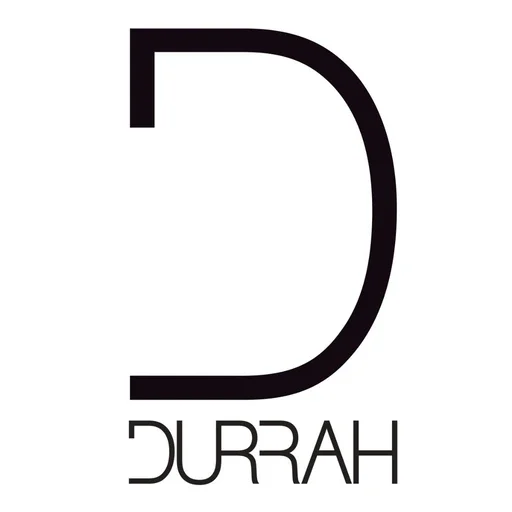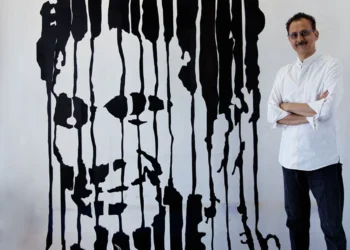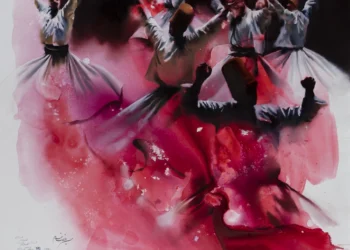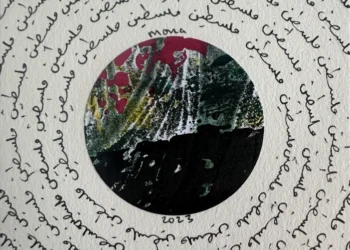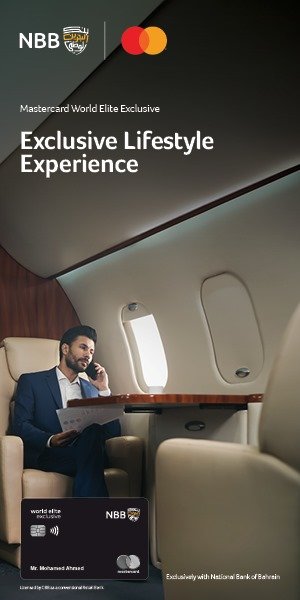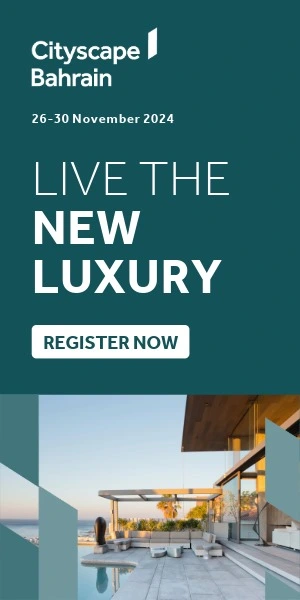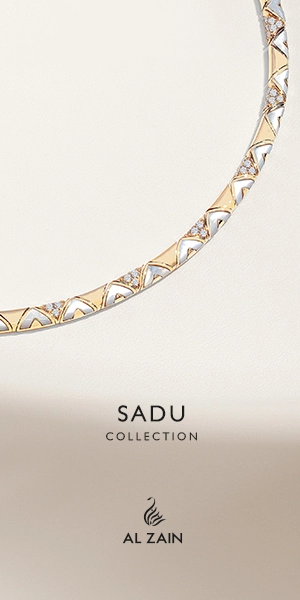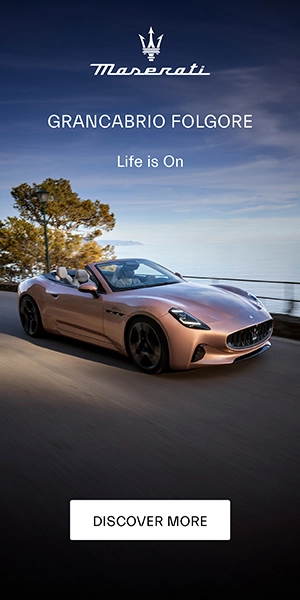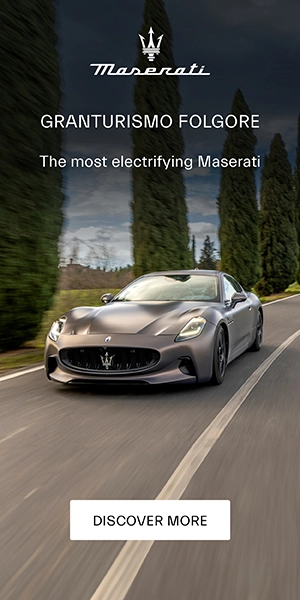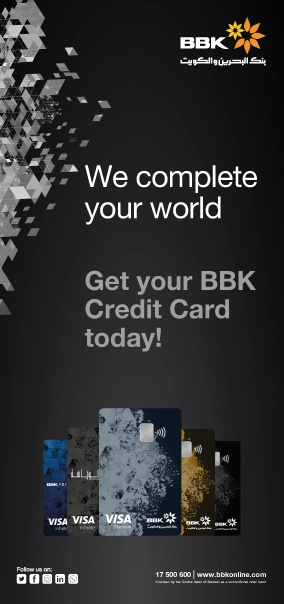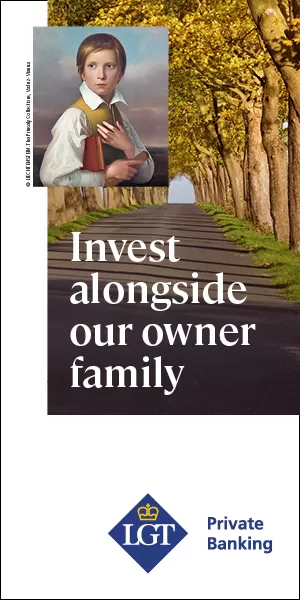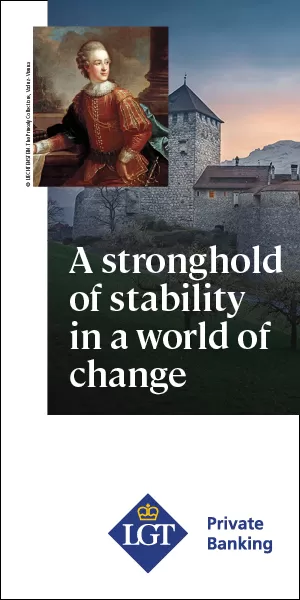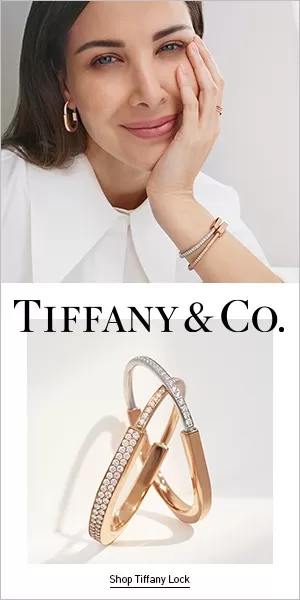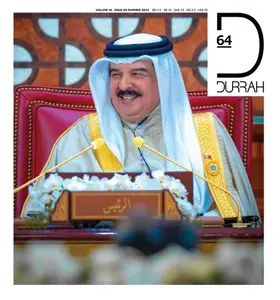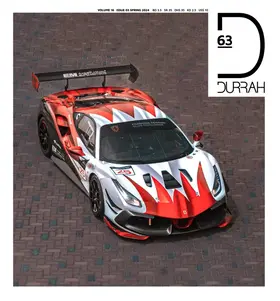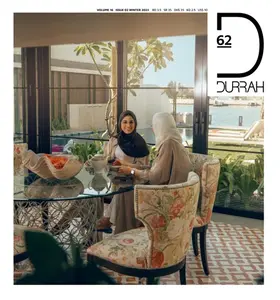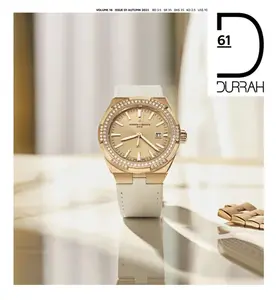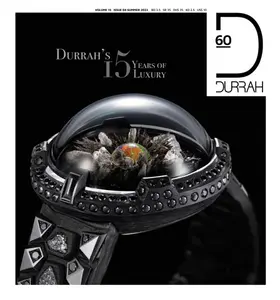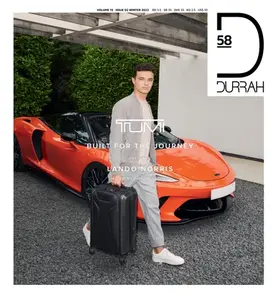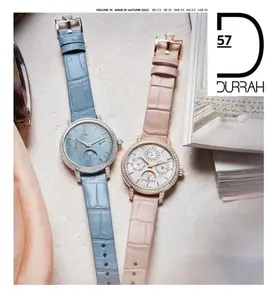WHAT SPARKED YOUR INITIAL INTEREST IN CALLIGRAPHY, AND HOW DID YOU BEGIN YOUR JOURNEY IN THIS ART FORM?
I grew up in an artistic family and a highly cultural atmosphere. I started at the age of 4 or 5, imitating my brothers doing calligraphy. I grabbed my first pen and began copying them without knowing what the letters meant. It was a visual interest. I was fascinated with the shapes of letters and the movement.
COULD YOU DESCRIBE THE INFLUENCE OF SYRIAN CULTURE AND HERITAGE ON YOUR WORK?
I’d say Arabic culture more than Syrian. My main inspiration is based on literature in general, but poetry in specific. There were several periods of my inspiration: classic Arabic poetry, such as Al-Mutanabbi, and more from the Abbasid and Umayyad periods. Then some modern poets like Al-Sayyab, Darwish, Al-Jarrah, and Saran. As my experience matured, I extended my inspiration to include visual aspects and even refer to my own inner feelings in my art. At this stage, I was more influenced by Syrian places and nature, such as Damascus and Mayadeen (my town of origin).
HOW DO YOU BALANCE TRADITIONAL CALLIGRAPHIC TECHNIQUES WITH MODERN ARTISTIC EXPRESSIONS IN YOUR PIECES?
This is a good question that most traditional calligraphic artists struggle with. They can’t leave that zone. For me, I had an early understanding of what modern art experience required, so I decided to pursue my fine art study to complete my knowledge. That made it easier for me to transition my calligraphy reed pen into a brush while keeping the sense of calligraphy methods. Reaching a certain level of practice allows the artist to control tools smoothly.
WHAT MEDIUMS AND MATERIALS DO YOU PREFER TO USE, AND WHY?
In the past, I preferred watercolor-based techniques such as ink, natural pigment, and regular watercolor, which I used on paper. Later, I started using more and different materials, such as acrylic, collage, and printmaking. I mostly like ink on paper, but the topic directs me to the suitable medium. I feel very comfortable with acrylic, but I like to mix and experiment more.
CAN YOU SHARE SOME OF THE CHALLENGES YOU’VE FACED IN YOUR CAREER AND HOW YOU’VE OVERCOME THEM?
Once, a delivery person came to hand me something while I was working on a big piece of art. He was overwhelmed by watching the process and asked, “What is written there? I can’t figure out any word. What does it say?” He was an ordinary person. I told him, “How do you find the painting? Beautiful or not?” He said it was very beautiful but he didn’t understand it. Beauty is the answer. Then I asked, “When you chant a melody of a song by yourself, does it matter if you remember the words?” He said, “Not at all.” Go listen to the nightingale and fly.
HOW DOES THE PROCESS OF CREATING A CALLIGRAPHIC PIECE TYPICALLY UNFOLD FOR YOU?
I follow my intuition and my experience, dividing the process as I believe in the moment. For large works and murals, I do sketches, sometimes very precise ones. For other works, I do rough sketches to give space for the flow and improvisation.
WHO ARE SOME OF YOUR GREATEST INFLUENCES OR MENTORS IN THE FIELD OF CALLIGRAPHY AND ART?
I’d say Rembrandt for his sense of color and the drama of light. Baroque mural works have made a big impact on my art. Later on, all that faded away in favor of poetry and nature. Poetry and works (the meaning behind words) dominated my influences. I could transfer nature into my own vision.
CAN YOU DISCUSS A PARTICULAR PIECE THAT HOLDS SPECIAL SIGNIFICANCE TO YOU AND THE STORY BEHIND IT?
It is the story of my artwork based on Michigan Lake (the piece in the permanent collection of the UMMA). I was searching for a text, perhaps a poem, to create an art piece for the Watershed exhibition. I found a beautiful poem by Keith Taylor, which was already inspired by an artwork of James McNeill. The poet transformed the visual inspiration of the artist into literature. When I looked at the painting and then read the poem, I got different feelings, specifically from the poem, which gave me a different visual approach. What fascinated me was that the poet described nature as lines of words, and the dancer gave life to it. I immediately looked at the whole painting as a universe of letters. Letters replaced all named elements. The dancer is the flame of the movement of the water and the key to life. Waves are lines of the words of the poem (all translated into Arabic). I used the Diwany Jaly style (one of the most dynamic styles of Arabic calligraphy). Letters in the painting are doing a double mission: delivering the visual aspect of the poem and conveying the meaning (all are readable in Arabic). So even if you cannot read, you’ll visually get the message. The artist painted the view of Michigan Lake, then the poet did his interpretation, and I brought both the image and the words together in my own interpretation.
HOW DO YOU PERCEIVE THE ROLE OF CALLIGRAPHY IN TODAY’S CONTEMPORARY ART WORLD?
I think every artist, calligrapher, musician, or painter learns the foundational role to build their structure of work. Later on, their mission is to depart from that, to break it out, and create their own style. I always consider that the classic values of Arabic letters have the potential of generating endless shapes.
WHAT MESSAGE OR EMOTIONS DO YOU AIM TO CONVEY THROUGH YOUR ART?
Arabic letters and calligraphy can be used as visual elements that give the artist the chance to use them freely to express all that is going on inside and to communicate with the universe. Ibn Arabi said, “Letters are a nation among nations.”
HOW HAS YOUR WORK EVOLVED OVER THE YEARS, AND WHAT DO YOU SEE AS THE FUTURE DIRECTION OF YOUR ARTISTIC JOURNEY?
It is like a snowball, keep growing and keep diverting, exploring, and never has a limit. I’m working on natural elements and pigment now. In parallel, I’m working on video and immersive art with my dear friend artist Med Bousoni, trying to apply the five senses in our work. Maybe one day I’ll do the journey backward, just ink and paper. Paper could be light and sensitive as skin.
WHAT ADVICE WOULD YOU GIVE TO ASPIRING CALLIGRAPHERS AND ARTISTS WHO WISH TO FOLLOW IN YOUR FOOTSTEPS?
Believe in yourself. Reach the ultimate level of technique, but don’t rely on that. Always try to expand borders.
YOU OPEN EXHIBITIONS, HOLD WORKSHOPS, AND CONFERENCES ALL OVER THE WORLD. CAN YOU TELL US ABOUT A RECENT WORK YOU HAVE DONE?
Curated by you and held in Afyon Fadi Artspace in Turkey between December 2023 and February 2024, the exhibition “Mysterious Letters” was in respect to the great master of Ottoman calligraphy, Ahmed Şemseddin Karahisari. All the works and exhibitions I made in Afyon, where I felt Karahisari, called the Sun of Calligraphy, and his artistic spirit and spiritual richness, are very important and meaningful to me.
